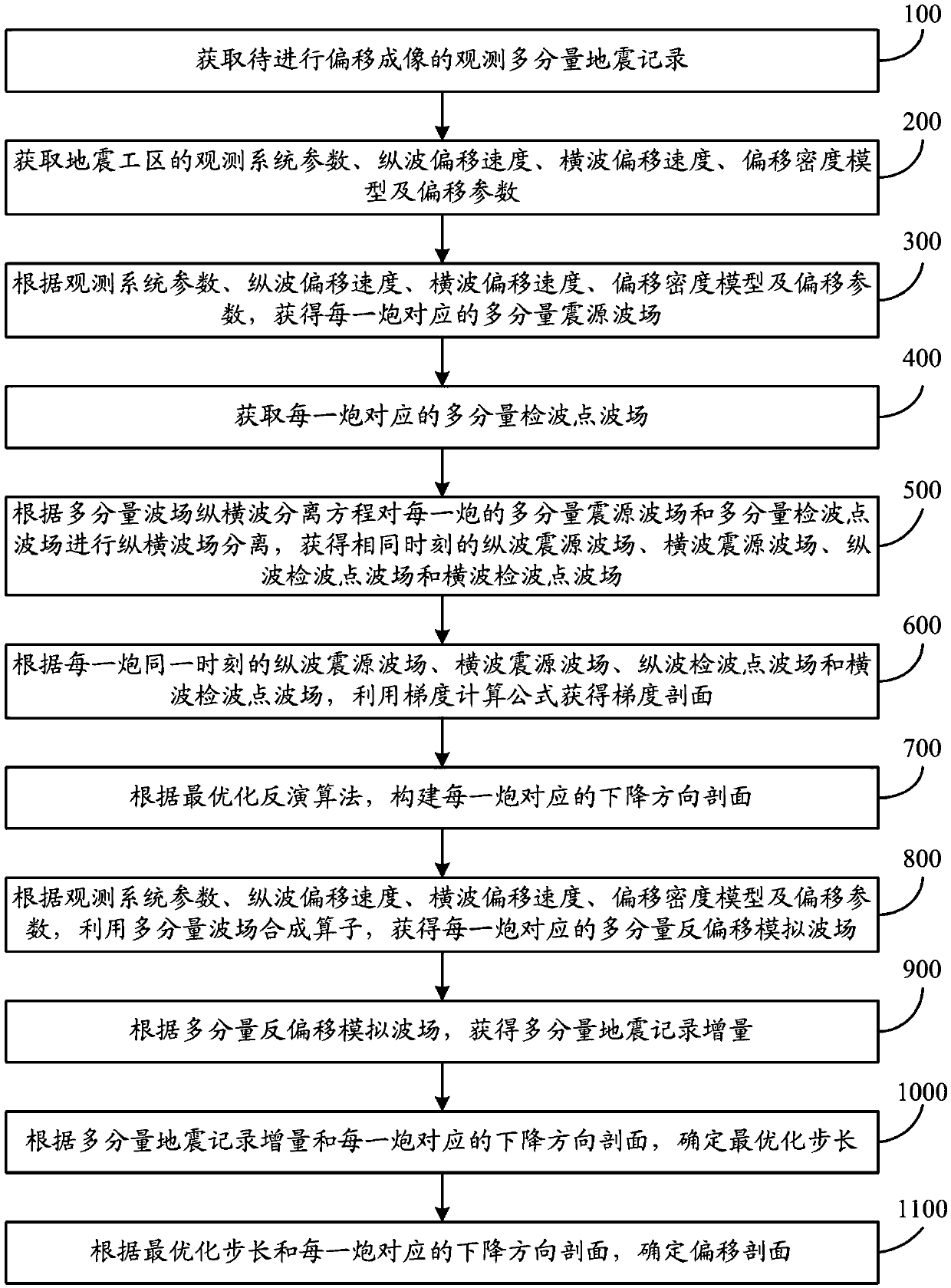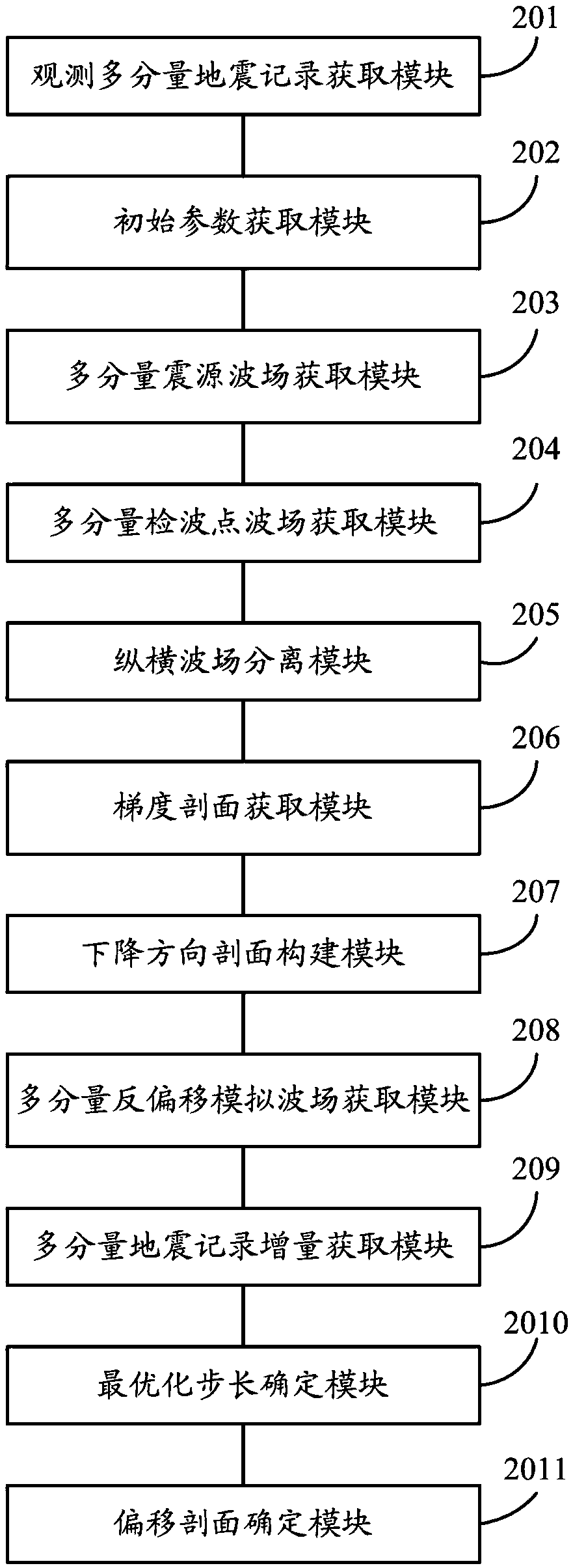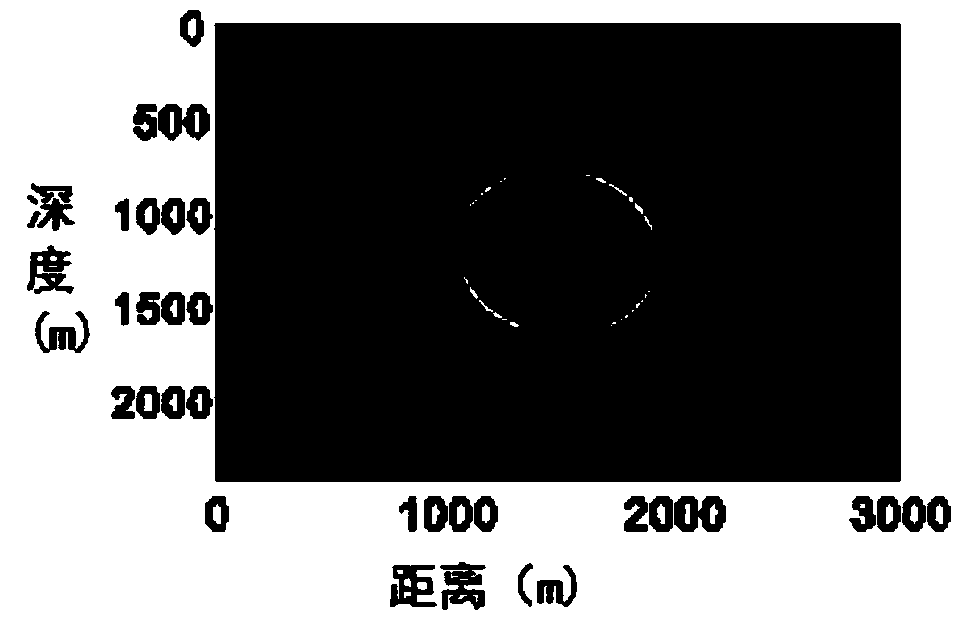Multi-component seismic data migration imaging method and system
A migration imaging and multi-component technology, applied in the field of seismic exploration, can solve the problems of affecting accuracy, inability to obtain high-quality migration sections, difficult seismic data processing and interpretation of migration sections, etc.
- Summary
- Abstract
- Description
- Claims
- Application Information
AI Technical Summary
Problems solved by technology
Method used
Image
Examples
Embodiment 1
[0173] Figure 3-Figure 8 It is a snapshot of the seismic wavefield at 350ms for the homogeneous medium model. in, image 3 is the X component simulated by the finite difference method in Embodiment 1 of the present invention; Figure 4 is the Z component simulated by the finite difference method in Embodiment 1 of the present invention; Figure 5 Utilize the P component separated by the method of the present invention for embodiment 1 of the present invention; Figure 6 It is the S component separated by the method of the present invention in Example 1 of the present invention; Figure 7 It is the X component synthesized by the method of the present invention in Example 1 of the present invention; Figure 8 It is the Z component synthesized by the method of the present invention in Example 1 of the present invention. Will image 3 and 4 and Figure 5 and 6 It can be seen from the comparison that the longitudinal and transverse waves are effectively separated, which p...
Embodiment 2
[0175] Figure 9-Figure 10 is the two-dimensional sag migration velocity model diagram, Figure 9 is the longitudinal wave velocity model in Embodiment 2 of the present invention; Figure 10 It is the shear wave velocity model in Embodiment 2 of the present invention. Set up 30 explosion sources on this model, the source wavelet is set as Lake wavelet, the main frequency is 20 Hz, the initial source point is located at (150m, 100m), and the shot interval is 100m. The receiving observation system on both sides of the middle shot is adopted, the maximum offset distance of one side is 2200m, the minimum offset distance is 150m, and the track spacing is 10m.
[0176] Figure 11-Figure 14 yes Figure 9-10 Multi-shot stacked migration section of the 2D subsidence model shown. in, Figure 11 It is the PP migration profile obtained by using the reverse time migration method in Example 2 of the present invention; Figure 12 It is the PS migration profile obtained by using the re...
Embodiment 3
[0178] Figure 15-Figure 16 is the Marmousi-2 migration velocity model, Figure 15 is the longitudinal wave velocity model in Embodiment 3 of the present invention; Figure 16 It is the shear wave velocity model in Embodiment 3 of the present invention. This model is one of the international standard models to verify the imaging effects of various migration methods. 87 explosion sources are set on this model, the source wavelet is set as Reck wavelet, the main frequency is 10 Hz, the initial source point is located at (300m, 300m), and the shot interval is 300m. The receiving observation system on both sides of the middle shooting is adopted, the maximum offset distance of one side is 5200m, and the track spacing is 20m.
[0179] Figure 17-Figure 20 yes Figure 15-16 Multi-shot stacked migration section of the Marmousi-2 model shown. in, Figure 17 It is the PP migration profile obtained by using the reverse time migration method in Example 3 of the present invention; ...
PUM
 Login to View More
Login to View More Abstract
Description
Claims
Application Information
 Login to View More
Login to View More - R&D
- Intellectual Property
- Life Sciences
- Materials
- Tech Scout
- Unparalleled Data Quality
- Higher Quality Content
- 60% Fewer Hallucinations
Browse by: Latest US Patents, China's latest patents, Technical Efficacy Thesaurus, Application Domain, Technology Topic, Popular Technical Reports.
© 2025 PatSnap. All rights reserved.Legal|Privacy policy|Modern Slavery Act Transparency Statement|Sitemap|About US| Contact US: help@patsnap.com



